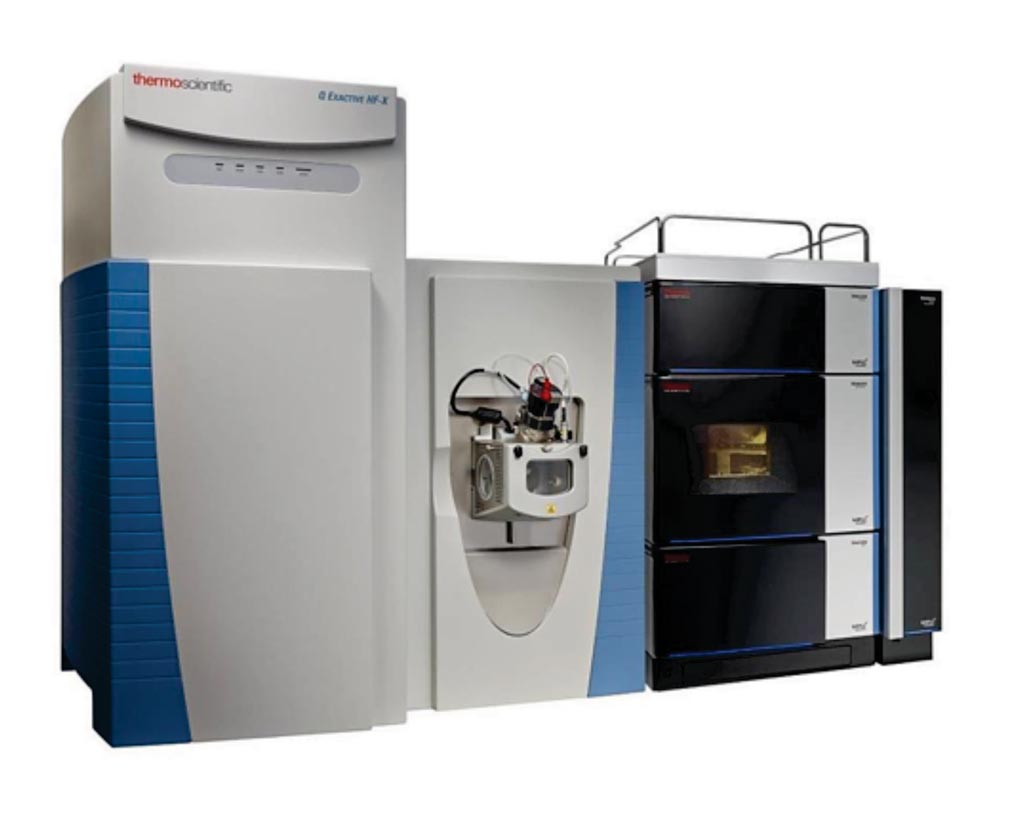LC-MS/MS Assay Directly Detects Urinary Bacteria
By LabMedica International staff writers
Posted on 30 Oct 2019
Fast identification of microbial species in clinical samples is essential to provide an appropriate anti-biotherapy to the patient and reduce the prescription of broad-spectrum antimicrobials leading to anti-bioresistances.Posted on 30 Oct 2019
Matrix-assisted laser desorption/ionization – time of flight-mass spectrometry (MALDI-TOF-MS) technology has become a tool of choice for microbial identification, but has several drawbacks as it requires a long step of bacterial culture prior to analysis (24 hours), has a low specificity and is not quantitative.

Image: The Q Exactive HF-X hybrid quadrupole mass spectrometer (Photo courtesy of Thermo Fisher Scientific).
Scientists at the Centre Hospitalier Universitaire de Québec (Québec, QC, Canada) and their colleagues developed a new strategy for identifying bacterial species in urine using specific liquid chromatography–mass spectrometry (LC-MS/MS) peptidic signatures. The team combined several mass spectrometry techniques to develop their assay, starting with shotgun mass spectrometry assays of pure bacterial colonies to develop mass spectral libraries for use in subsequent data-independent acquisition (DIA) assays. They used those DIA assays to detect bacterial peptides in urine samples, quantifying 31,000 peptides from 190 samples containing 15 bacterial species that cause 84% of all urinary tract infections (UTIs).
The sceintists tested these targeted assays in urine samples inoculated with the four most commonly found causes of UTIs (Escherichia coli, Streptococcus agalactiae, Enterococcus faecalis, and Klebsiella pneumonia) at five different concentrations running the experiments with 90-minute LC gradients on a Thermo Fisher Scientific Orbitrap Fusion. They also ran the samples on a Thermo Fisher Q Exactive HF-X using a 30-minute LC gradient. The assays showed 100% accuracy in all inoculations at concentrations above the standard clinical threshold and 97% accuracy overall.
The scientists also compared their direct detection approach to a standard MALDI-TOF workflow, finding that in a set of 27 patients, the two methods agreed on 19 of the samples (seven of which were not infected and nine of which were infected with E. coli), while disagreeing on eight samples, seven of which the MALDI-TOF method identified as infected while the LC-MS/MS approach identified as not infected, though these seven were identified by the MALDI-TOF at the genus, but not species level.
The authors concluded that their work demonstrates the efficiency of the method for the rapid and specific identification of the bacterial species causing UTI and could be extended in the future to other biological specimens and to bacteria having specific virulence or resistance factors. The study was published on October 4, 2019, in the journal Molecular & Cellular Proteomics.
Related Links:
Centre Hospitalier Universitaire de Québec














